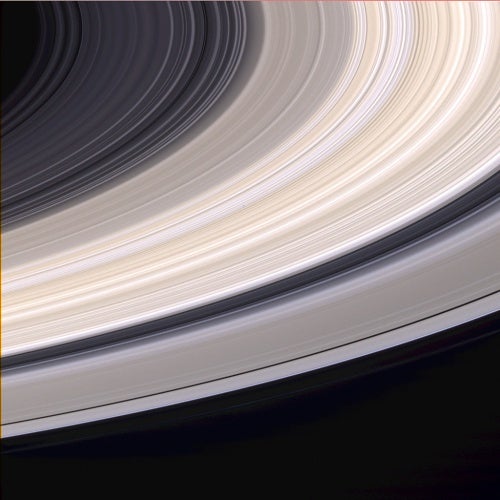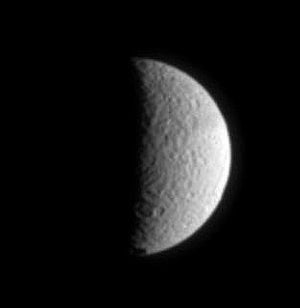Nine days before it entered orbit, Cassini spacecraft captured this exquisite natural-color view of Saturn’s rings. Cassini’s narrow-angle camera took the images that make up this composition on June 21, from 4 million miles (6.4 million kilometers) away from the Ringed Planet. The scale is 23 miles (38 km) per pixel.
NASA / JPL / Space Science Institute
July 22, 2004
A new natural-color image of Saturn’s rings, just released by the Cassini imaging team, shows shades of gray, pink, and brown. The rings are composed mainly of water ice, which is white, and scientists think contaminants such as rock or carbon compounds cause the color variations. The brightest part of the image, curving from the lower left to the upper right, is the B ring, which mostly is a sandy brown. Scientists hope the spacecraft’s four-year tour of Saturn will help them more precisely determine the rings’ composition.
A new natural-color image of Saturn’s rings, just released by the Cassini imaging team, shows shades of gray, pink, and brown. The rings are composed mainly of water ice, which is white, and scientists think contaminants such as rock or carbon compounds cause the color variations. The brightest part of the image, curving from the lower left to the upper right, is the B ring, which mostly is a sandy brown. Scientists hope the spacecraft’s four-year tour of Saturn will help them more precisely determine the rings’ composition.
Since it entered Saturn’s orbit June 30, Cassini has been taking pictures not only of the rings, but also of the planet’s many moons. So far, it has photographed five of the 31 moons, sending back stellar images of the small moon Phoebe, and fuzzy pictures of the largest moon, Titan, as well as pictures of Tethys, Rhea, and Dione. The spacecraft will do closer flybys of Tethys and Rhea, both scheduled for late 2005.











